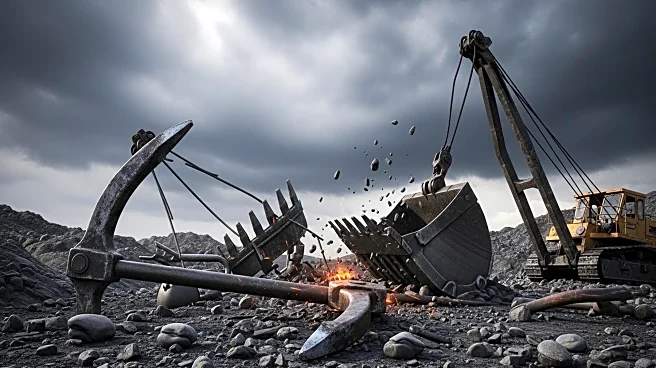What's Happening?
Residents of the Esaase and Tetrem communities in Ghana's Amansie West District reportedly set fire to mining equipment valued at approximately $28 million. The incident took place at the 'cut 5' and 'cut 6' zones of Asanko Mining Company, affecting machinery owned by Rabotech Mining Services Limited, a subcontractor for Asanko Mining Group. Officials from the Minerals Commission, Rabotech, and Asanko Mines visited the site and found the equipment burnt beyond recognition. The selective destruction of Rabotech's equipment has led to suspicions of a targeted attack. Police, including officers from the Criminal Investigations Department, are investigating the incident, speaking to locals for leads.
Why It's Important?
The destruction of mining equipment in Esaase and Tetrem communities could have significant economic repercussions. Rabotech Mining Services Limited, a key subcontractor, faces substantial losses, potentially affecting its operations and workforce. The incident may disrupt local economies, as many residents depend on mining activities for their livelihoods. The targeted nature of the attack raises concerns about security and stability in the region, potentially deterring future investments. The investigation's outcome could influence community relations and the mining sector's regulatory environment.
What's Next?
Authorities are expected to continue their investigation, focusing on identifying those responsible for the arson. Community leaders, including the chief and queen of Tetrem, have been briefed on the situation, and further discussions with traditional authorities are anticipated. The outcome of these investigations could lead to increased security measures and changes in community engagement strategies by mining companies. The incident may also prompt a review of local policies regarding mining operations and community relations.
Beyond the Headlines
The incident highlights underlying tensions between mining companies and local communities, often stemming from environmental concerns and resource allocation. The destruction of equipment may reflect broader dissatisfaction with mining practices and perceived inequities. This event could catalyze discussions on sustainable mining practices and community involvement in decision-making processes, potentially leading to long-term shifts in how mining operations are conducted in the region.












